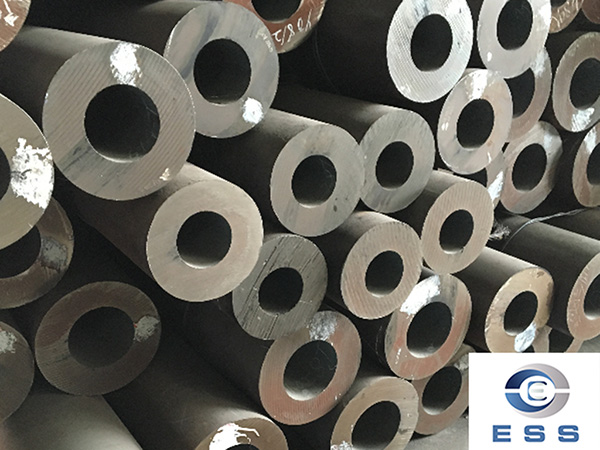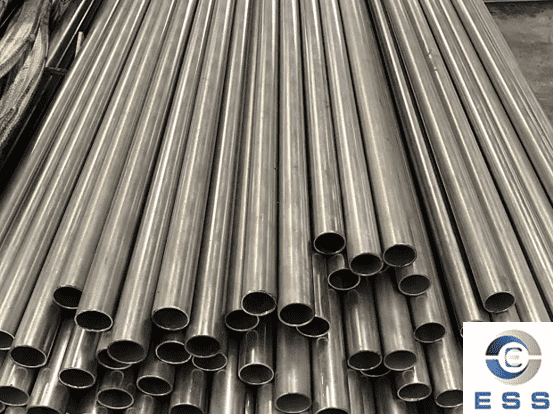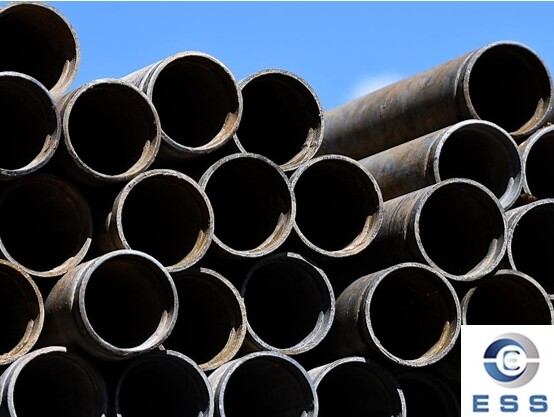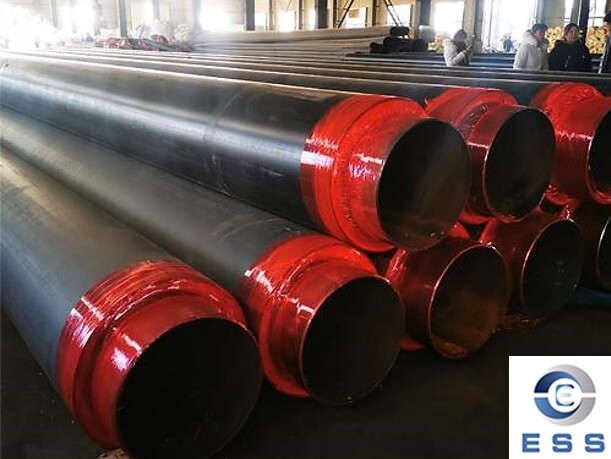Why Seamless Steel Pipe is the Backbone of Industrial Infrastructure?
I. Introduction
A. Definition of seamless steel pipe
Seamless steel pipe is a type of pipe that is manufactured without any welding seam or joint. It is produced using a solid cylindrical billet, which is heated and then stretched over a mandrel to create the desired pipe shape and size. The absence of welds and joints ensures the pipe's uniformity and strength, making it ideal for various industrial applications.
B. Importance of industrial infrastructure
Industrial infrastructure serves as the foundation for economic growth and societal progress. It encompasses a wide range of sectors, including oil and gas, construction, manufacturing, automotive, and energy. Robust industrial infrastructure ensures the efficient production, transportation, and distribution of goods and services, thereby driving economic development and improving the overall quality of life.
C. The role of seamless steel pipe in supporting industrial development
Seamless steel pipe plays a crucial role in industrial infrastructure development due to its exceptional characteristics. It provides a reliable and cost-effective solution for the transportation of fluids, gases, and energy resources while withstanding high pressures and temperatures. This essay will explore the advantages of seamless steel pipe in various industrial sectors and its contribution to sustainable and eco-friendly infrastructure.

II. Advantages of Seamless Steel Pipe
A. Superior strength and durability
Seamless steel pipes are engineered to withstand tremendous stresses and pressures, making them highly reliable in demanding industrial environments. Their uniform composition and absence of welds make them less susceptible to structural weaknesses, ensuring long-lasting performance and safety.
B. Corrosion resistance and reliability
The seamless manufacturing process eliminates the weak points caused by welding, reducing the vulnerability to corrosion and leaks. As a result, seamless steel pipes are widely used in harsh environments, such as those involving corrosive substances or extreme weather conditions. Their reliability is crucial for industries like petrochemicals and offshore drilling, where any failure can lead to severe consequences.
C. Cost-effectiveness and reduced maintenance
Although the initial cost of seamless steel pipes may be higher than some alternatives, their longevity and low maintenance requirements make them cost-effective in the long run. The reduced need for repairs and replacements translates into significant savings for industries relying on seamless steel pipes, minimizing downtime and increasing operational efficiency.
D. High-pressure and high-temperature applications
Seamless steel pipes possess the ability to withstand high pressures and temperatures, making them ideal for industries operating under extreme conditions. In applications like power generation, where high-temperature steam is involved, seamless steel pipes ensure safe and efficient energy production.
III. Seamless Steel Pipe in Oil and Gas Industry
A. Transportation of crude oil and natural gas
The oil and gas industry heavily relies on seamless steel pipes for transporting crude oil and natural gas from extraction sites to refineries and distribution centers. These pipes ensure the integrity of the fluid transportation network, mitigating the risk of leaks and minimizing environmental impact.
B. Importance in exploration and production operations
Seamless steel pipes are essential in exploration and production activities, where they are used in well drilling, casing, and completion operations. Their reliability and ability to withstand high pressures and harsh environments are critical for the success of these operations, enabling efficient extraction of valuable resources.
C. Role in offshore drilling and subsea applications
Offshore drilling and subsea installations demand materials that can endure extreme conditions, including exposure to saltwater and underwater pressures. Seamless steel pipes are preferred for their strength and resistance to corrosion, making them indispensable in offshore oil and gas projects, where reliability is paramount.
IV. Seamless Steel Pipe in Construction Sector
A. Structural applications in buildings and bridges
In the construction sector, seamless steel pipes are widely used for structural applications in buildings, bridges, and other infrastructure projects. Their high strength-to-weight ratio and consistency make them suitable for supporting heavy loads and ensuring the stability of structures, enhancing safety and longevity.
B. Support for infrastructure development projects
Seamless steel pipes play a vital role in infrastructure development projects, such as water supply networks, sewage systems, and transportation tunnels. Their durability and corrosion resistance make them ideal for underground utilities, ensuring long-lasting and reliable infrastructure, critical for urban development.
C. Seamless steel pipe in underground utilities and pipelines
Seamless steel pipes are extensively employed for underground utilities and pipelines due to their ability to withstand soil pressure and external stresses. They are particularly important in urban areas, where efficient and reliable underground networks are critical for sustaining modern life, facilitating the movement of essential resources.
V. Seamless Steel Pipe in Manufacturing and Automotive Industries
A. Applications in manufacturing processes
Seamless steel pipes find applications in various manufacturing processes, including the production of machinery, equipment, and consumer goods. Their versatility, high precision, and ability to withstand extreme conditions make them an indispensable component of modern manufacturing, promoting efficiency and product quality.
B. Usage in automotive production and transportation
The automotive industry relies on seamless steel pipes for manufacturing components like exhaust systems, fuel lines, and structural elements. Their strength, durability, and corrosion resistance contribute to the safety and performance of vehicles, ensuring a reliable means of transportation.
C. Seamless steel pipe for machinery and equipment
In the machinery and equipment sector, seamless steel pipes are used for producing parts and components with precise dimensions and high mechanical properties. Their reliability ensures the optimal performance of industrial machinery and equipment, supporting manufacturing processes across diverse sectors.
VI. Seamless Steel Pipe in Energy and Power Generation
A. Role in power plants and energy production
Power plants, whether fossil fuel-based or nuclear, require a reliable means of transporting steam, water, and other fluids. Seamless steel pipes are favored for their resistance to high temperatures and pressures, making them essential components in energy generation facilities, contributing to stable and efficient power production.
B. Seamless steel pipe for renewable energy projects
The seamless steel pipe industry also supports the development of renewable energy projects. These pipes are utilized in hydropower systems, geothermal installations, and solar thermal applications, contributing to the expansion of clean and sustainable energy sources, supporting global efforts to combat climate change.
C. Transporting energy resources efficiently
In addition to power generation, seamless steel pipes are crucial for transporting energy resources, such as natural gas and petroleum products, from production sites to distribution centers and end consumers. Their efficiency and reliability ensure the smooth flow of energy resources across vast distances, minimizing energy wastage and enhancing energy security.
VII. Environmental Impact and Sustainability
A. Recyclability and eco-friendliness
Seamless steel pipes are highly recyclable, reducing their environmental footprint and promoting sustainable manufacturing practices. Recycling steel requires less energy and results in fewer greenhouse gas emissions compared to producing new steel from raw materials, making seamless steel pipes a greener choice.
B. Energy efficiency in production and usage
The production process of seamless steel pipes has become increasingly energy-efficient, reducing energy consumption and associated carbon emissions. Moreover, their ability to transport fluids and energy resources efficiently contributes to energy conservation during usage, aligning with global efforts to combat climate change.
C. Contribution to a greener industrial infrastructure
The adoption of seamless steel pipes in various industries aligns with the global trend toward greener and more sustainable practices. Their durability, reduced maintenance needs, and recyclability promote a greener and more environmentally friendly industrial infrastructure, supporting a circular economy and responsible resource management.
VIII. Challenges and Innovations in Seamless Steel Pipe Industry
A. Technological advancements and manufacturing improvements
The seamless steel pipe industry continues to evolve, driven by technological advancements and innovations. Ongoing research and development efforts aim to enhance pipe quality, expand application possibilities, and improve production processes, ensuring that seamless steel pipes remain at the forefront of industrial infrastructure development.
B. Addressing potential limitations and weaknesses
While seamless steel pipes offer numerous advantages, they still face challenges, such as high production costs and limitations in certain dimensions and applications. Industry stakeholders are working to address these issues and develop more cost-effective and versatile solutions, fostering continuous improvement in the seamless steel pipe sector.
C. Emerging trends and future outlook
The seamless steel pipe industry is expected to witness significant growth in the coming years, driven by the expansion of infrastructure projects and increasing demand in various sectors. Moreover, advancements in materials science and manufacturing technologies are likely to unlock new possibilities and applications for seamless steel pipes, ensuring their relevance and prominence in future industrial development.
IX. Conclusion
A. Recapitulation of seamless steel pipe's significance
Seamless steel pipe stands as a fundamental element in modern industrial infrastructure, providing strength, durability, and reliability across a wide range of applications. Its role in supporting industries critical to economic growth and sustainable development underscores its significance in shaping the modern world.
B. Key takeaways on its role in industrial infrastructure development
Seamless steel pipes are vital for the transportation of fluids and energy resources, structural applications in buildings and bridges, and manufacturing processes in diverse industries. Their numerous advantages and contributions to sustainable and efficient industrial infrastructure make them an irreplaceable backbone of modern society.
C. Prospects for the seamless steel pipe industry going forward
With ongoing innovations and a growing focus on sustainable development, the seamless steel pipe industry is poised for continued growth and advancement. As industries continue to evolve and expand, seamless steel pipe will remain the backbone of industrial infrastructure, fostering economic development, environmental responsibility, and a greener future.













 Eastern Steel Manufacturing Co.,Ltd not only improve product production and sales services, but also provide additional value-added services. As long as you need, we can complete your specific needs together.
Eastern Steel Manufacturing Co.,Ltd not only improve product production and sales services, but also provide additional value-added services. As long as you need, we can complete your specific needs together.










